The Ultimate Guide to Seitan · i am a food blog
Seitan is a super versatile vegan protein in vital wheat gluten. This is what is used to make vegan chicken, a false chicken, and does this image not look like chicken?
If you are a vegan, or maybe even if you are not but you have looked at viral kitchen tiktoks, I’m sure you have heard of Seitan. These days, many people call it false chicken because it is made of flour.


However, even if it is made from wheat, it is nothing like bread. When it is cooked, it looks like and acts like meat! It is rich in protein, which makes it the perfect alternative of vegan meat. Like meat, Seitan can be prepared several ways: porridge, baked, fried, pan -fried, trenched, crumbled or shredded. Like tofu, it can take as many flavors and is extremely versatile.
What is Seitan?
Seitan is wheat gluten. Essentially, it is gluten -based food, the protein found in wheat. The name commonly used, Seitan, is Japanese (セイタン) which implies that it was invented in Japan, but wheat gluten appeared for the first time in China in the 6th century.
It is an incredibly popular ingredient in the countries of Asia and Southeast Asia as a vegan alternative to meat because of its foam which recalls the texture of meat.
You can buy it in natural food grocery stores or whole foods, but even better, it’s really easy to do at home! You can do it in two ways: either using whole flour and washing it, using vital wheat gluten.
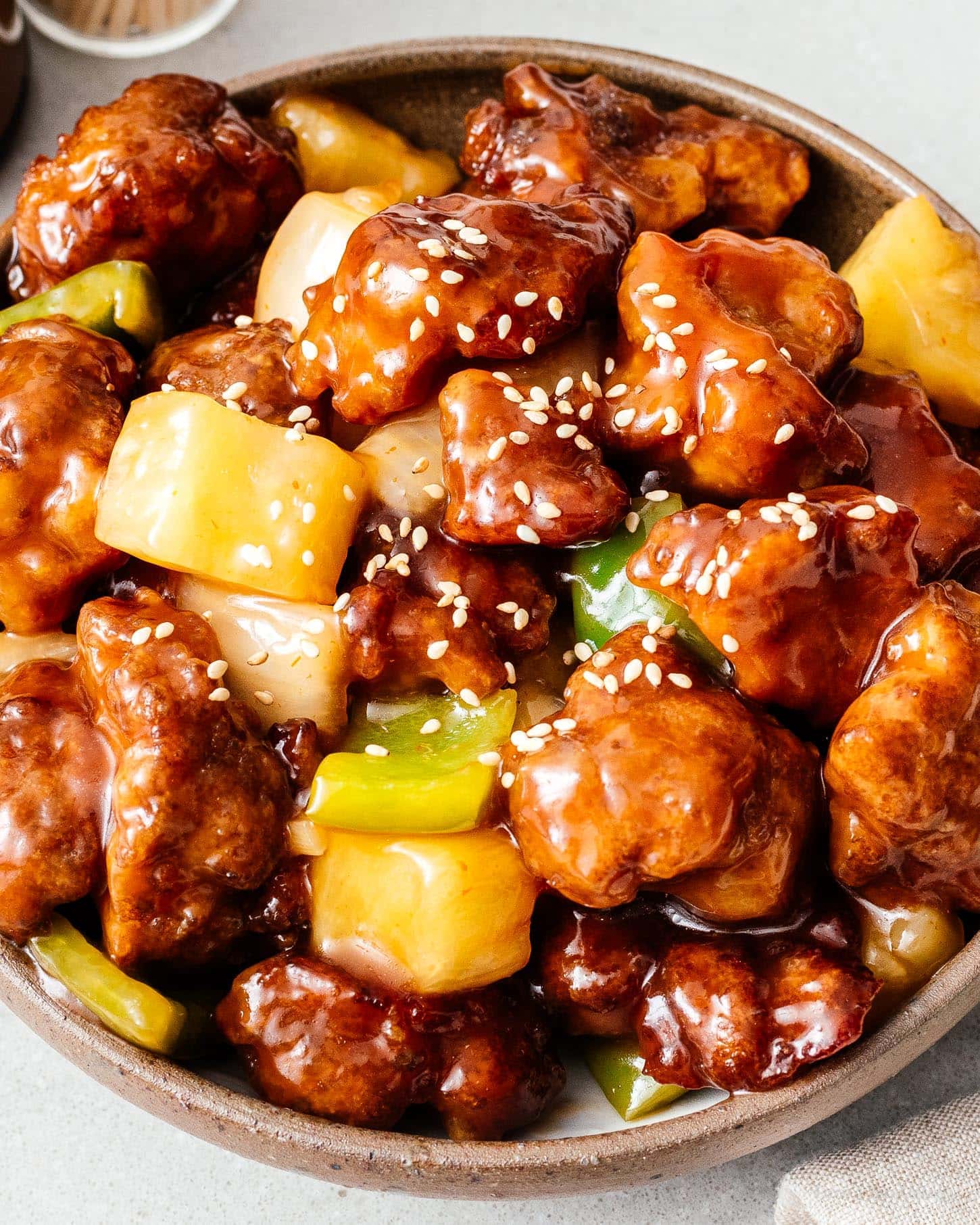

How to do seitan
- Make the dough: Mix 1 cup of vital wheat gluten with 1/4 cup chickpea flour. Add a few seasonings and incorporate 1 cup of water or vegetable broth.
- Knead the dough: Flee the dough for 5 to 10 minutes so that it develops strands of gluten – this is what gives Seitan its fleshy texture. The more you knead, the more soft it will be. Conversely, the less you knead, the more you tend, so adjust according to what you like. I like to use a stand mixer.
- Let him rest: Let the dough rest for about 5 minutes so that gluten can relax.
- Simmer: Cut the dough into 4 (or more rooms), form and simmer in a baset in a tasty broth.
- Use it in recipes: Your Seitan is cooked and ready to eat! You can eat it as is, or use it in recipes where you use meat.


Seitan ingredients
Everything you need is gluten and vital wheat water.
Where does he come from?
Seitan was first invented as an alternative of meat for Chinese Buddhist monks because one of the key principles of Buddhism is strict vegetarianism. There is a huge amount of Chinese vegetarian food that looks like ordinary Chinese food but is made with Seitan. Nowadays, it is popular all over the world for vegans and vegetarians.
How is Seitan used?
Seitan is used as most alternative meat and meat products. You can use it anywhere meat is used! It can be shredded and crumbled, cut and transformed into sausages or nuggets. Anything that meat can do, it can also do.
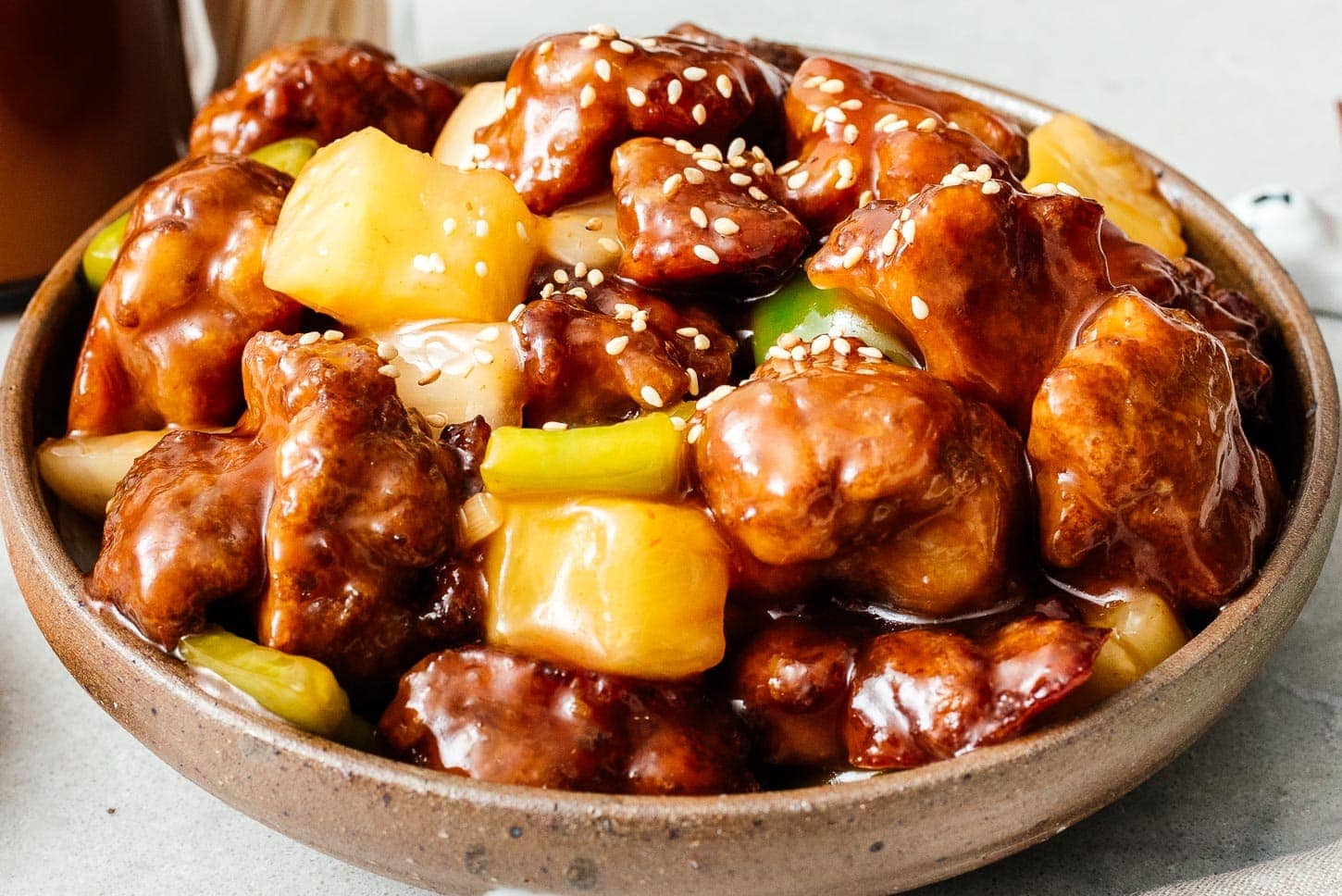

What does Seitan look like?
Seitan alone does not taste – it’s very soft, a little salty and a little bland. It is more texture rather than its taste. Textmental, it is ultra fleshy and can take any flavor. You can season it to have a taste for meat, but most people use it like a blank slate that can then be seasoned when you cook it in recipes.
What is Seitan done?
The Seitan is made from wheat gluten, the protein found in wheat.
The easy way to do seitan
The key to making seitan at home is vital wheat gluten! It was a difficult thing to do but Now that vital wheat gluten is widely availableThis is the simplest meat alternative you can do at home.
What is vital wheat gluten?
Vital wheat gluten is the form extracted from protein found in wheat. This is what helps to make the bread inflatable, spongy and elastic. When you isolate gluten protein in wheat, you end up with vital wheat gluten which, when mixed with water and kneaded a little, has a dense texture in the shape of meat.
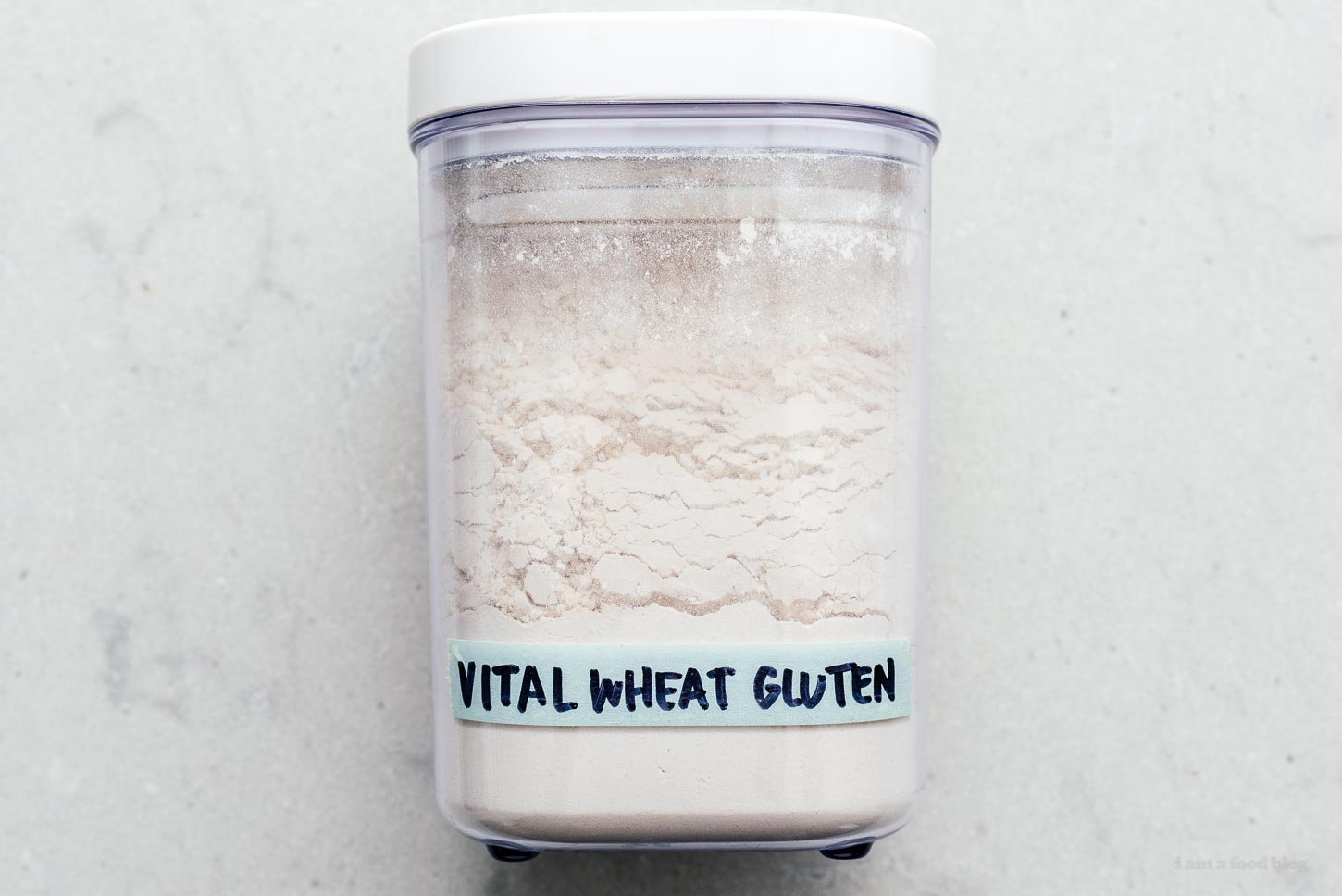

Optional: The addition of another type of flour gives you a softer texture. Using Just Gluten can produce a final product a little more difficult than some people. This is why when you look at the ingredients of a commercial set of this kind of thing, you will often see soy proteins. You can use any alternative flour you like, I like chickpea or soy flour. If you don’t have chickpea flour But you have dried chickpeas, you can do chickpea flour at home using a mixer or a food processor to grind dried chickpeas until they are fine and powdered.
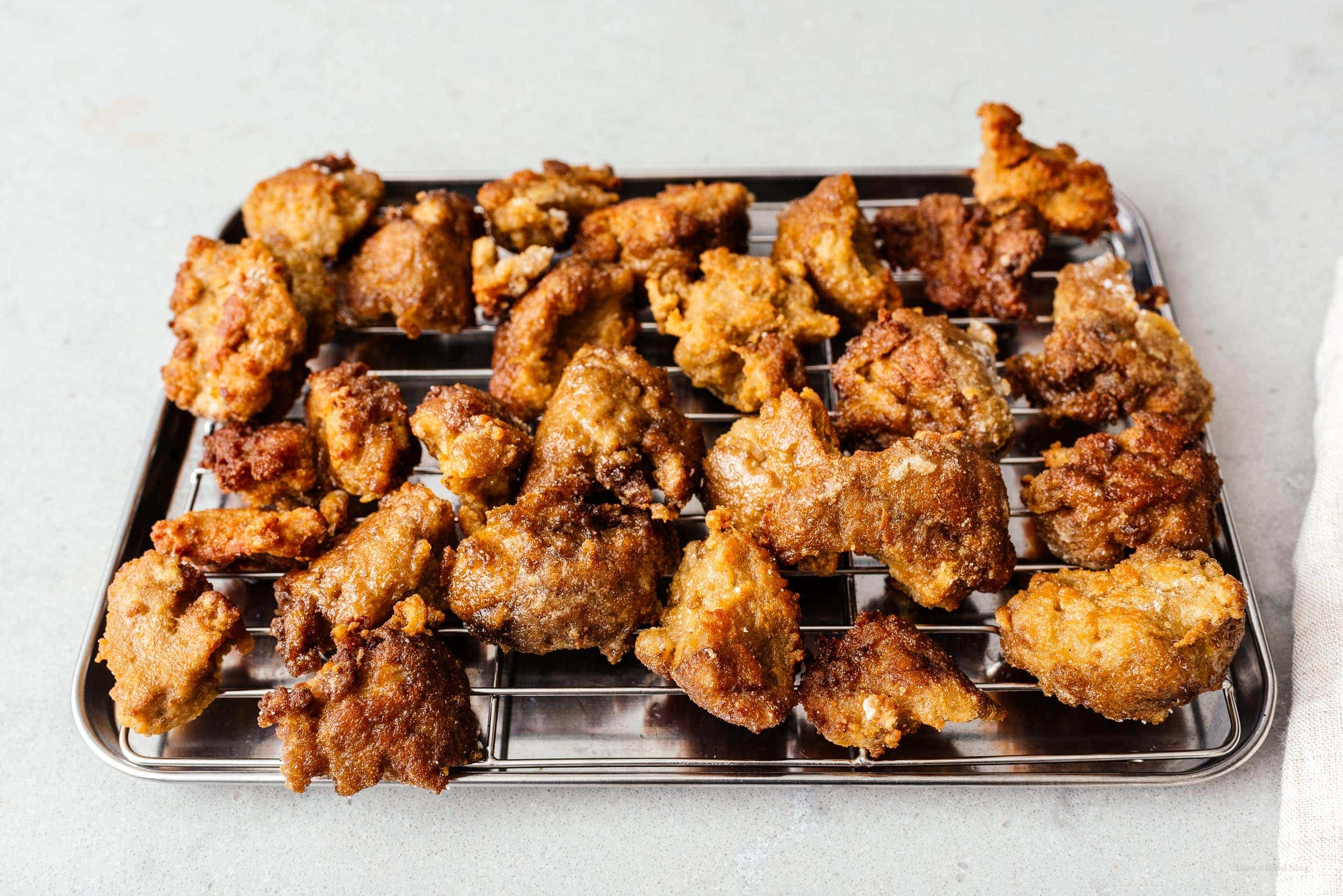

Flour
Seitan washed flour is what becomes viral on Tiktok and even if it works definitively, it is much more work than using vital wheat gluten. It can take hours.
Here’s how you do it:
- Mix 3 parts of the flour With 1 water part and knead. Place the dough ball in a bowl of fresh water. Wash the dough by kneading and stretching.
- Throw the waterAdd new water and continue washing, rejecting and adding a new water, until the water becomes more or less simply touched and your dough is stringent.
- Let the dough rest In a colony for 20 minutes, then shape and cook the same as Seitan made from vital wheat gluten.
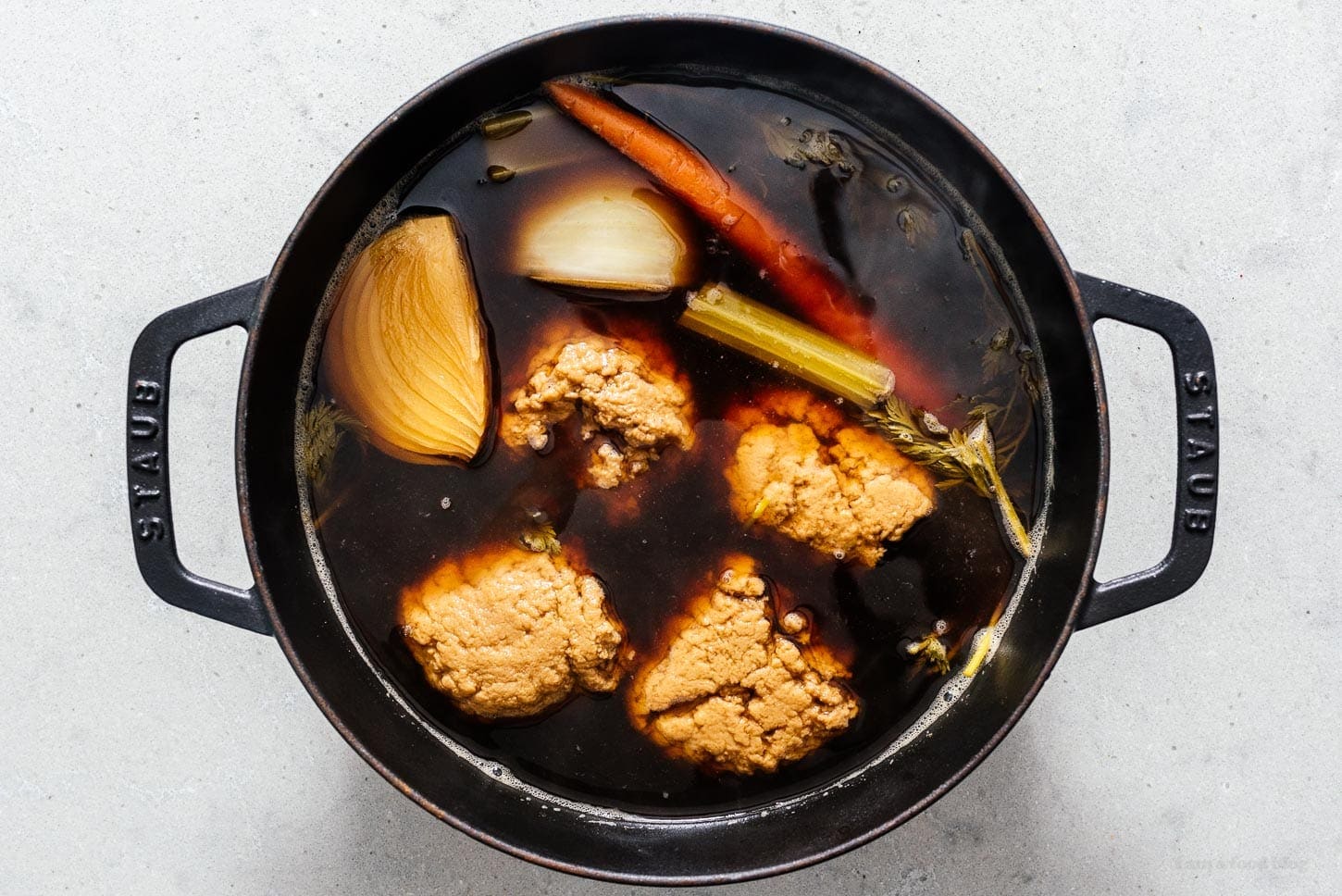

How to cook Seitan
Like meat, there are tons of Seitan ways to cook. I like to simmer it so that the flavor of the stock permeates and savor the interior. My favorite way to finish it is to tear it into pieces and then fry after it was simmered.
Steam: steam creates a soft elevation that has bubbles and gluten ventilation. It is denser than Seitan simmered and not as juicy – it’s good for seizure or frying. Steam is also slightly faster than simmering.
Simmer: the simmer gives you a soft elevation and a lot of gluten ventilation. It also has the additional bonus to add flavor to Seitan because you can season your broth. When you have simmered, be sure not to let it boil because it will become too inflated and will lose the fleshy texture you are looking for.
Fry Fry: The frying gives you golden puffs that are ventilated and which have a smooth texture when you cook it again. In the photo below.
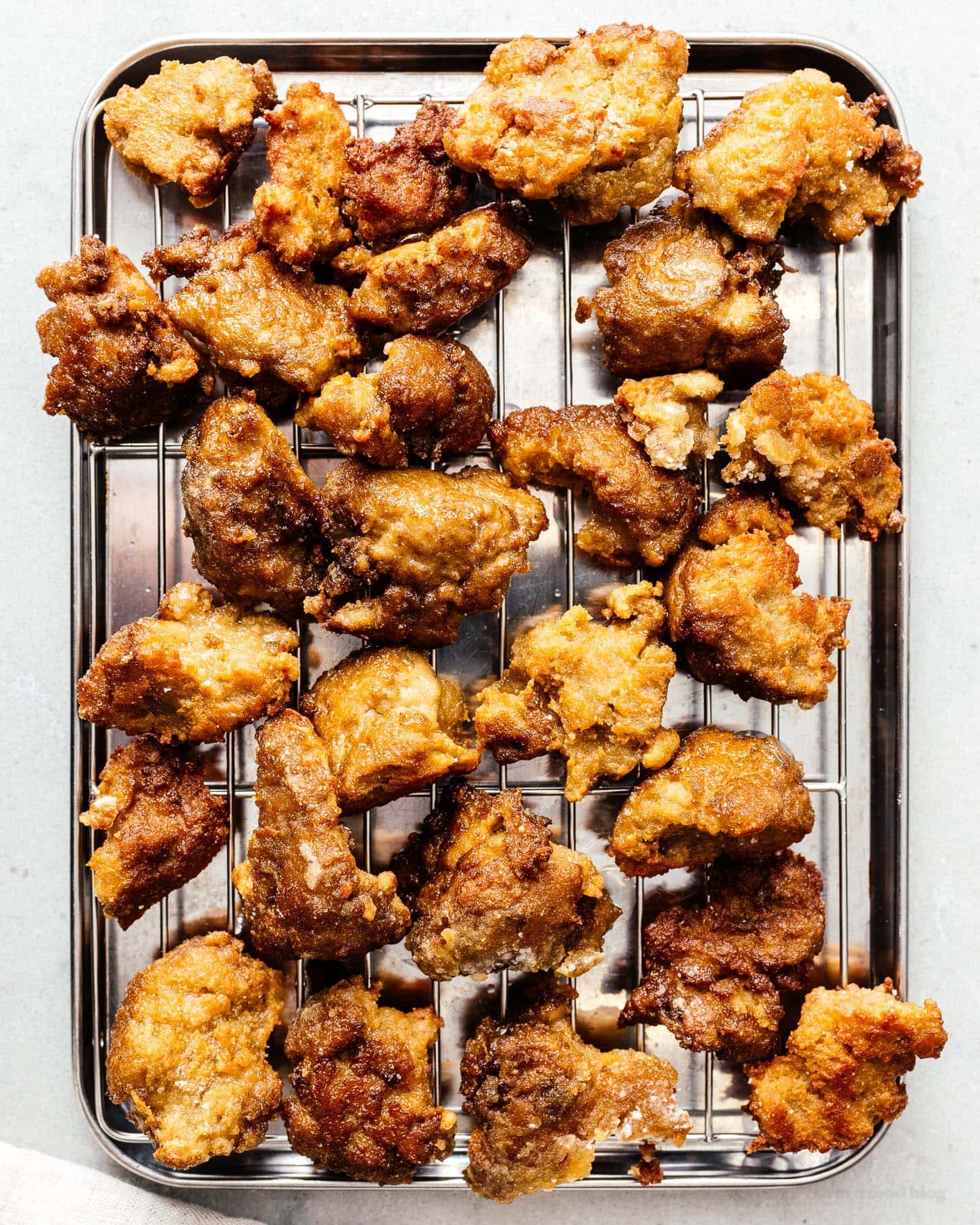

Where to buy it
If you are wondering where Seitan is at the grocery store, it is in the refrigerator section! You will find it next to the tofu. Sometimes you may have to go to the local Asian grocery store, where it will also be in the Frozen section.
How to store
Keep it wrapped in a container sealed in the refrigerator up to a week.
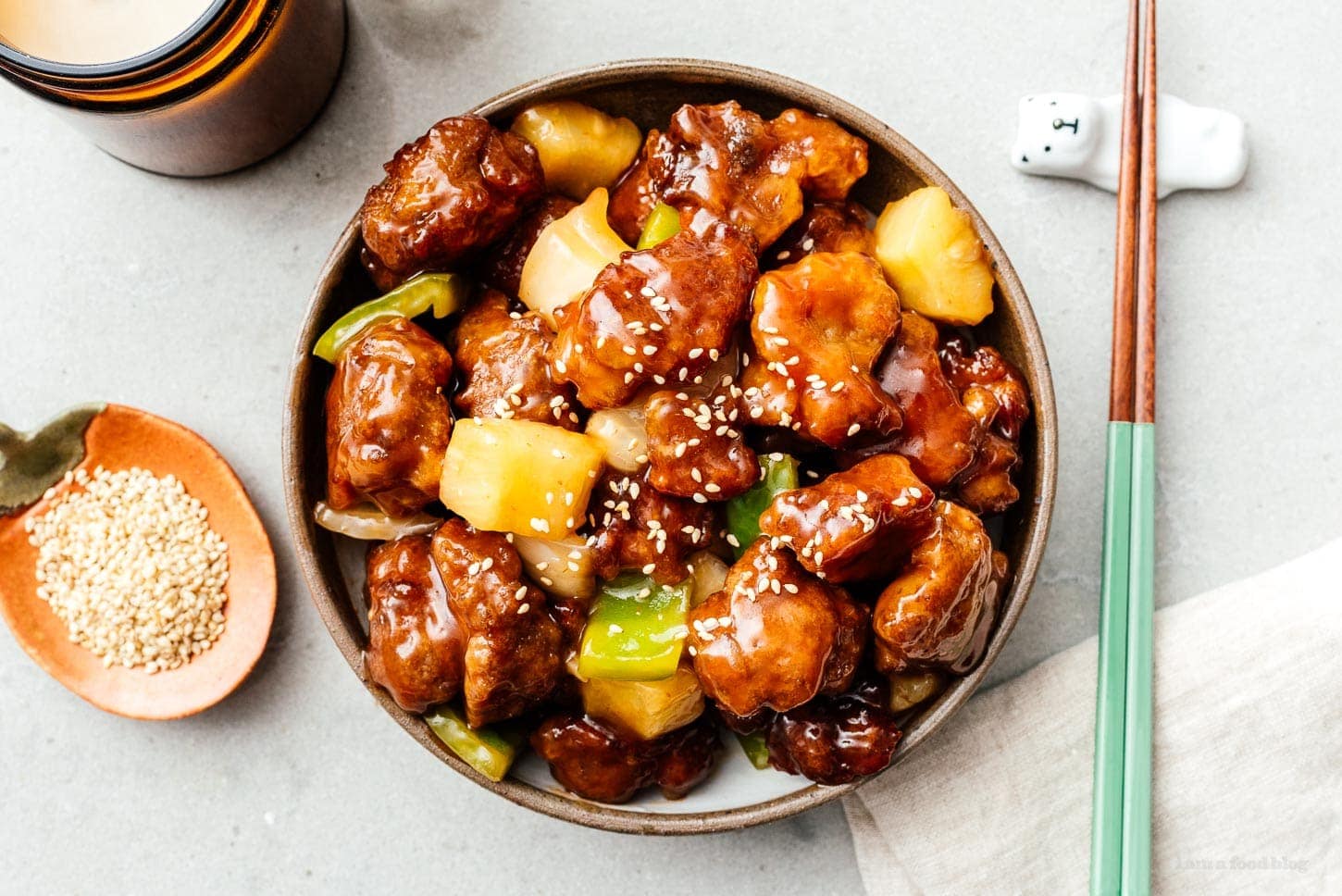

Is it healthy?
It is an excellent source of lean protein and an excellent substitute of meat. It is low in saturated fats and carbohydrates. That being said, if you are sensitive to gluten or you are celiac, you would better eat tofu because Seitan is made from vital wheat gluten.
I hope this answers some of your questions about Seitan and inspires you to try it at home! If you are looking for meat alternatives that are not tofu, it’s an excellent choice.
Seitan recipes
- 6 cups broth of choice, for example: vegetables
- 1/2 average onion
- 1 carrot roughly
- 1 stem celery roughly
- 1/3 cup I am sauce
-
In a large bowl, mix vital wheat gluten, chickpea flour, onion powder, garlic powder and salt.
-
Add the water or vegetable broth and incorporate a dough. Place on a work surface and knead for 5 to 10 minutes. The more you knead, the more meat your seitan will be. If you are looking for a seitan that can shred, knead longer. If you want more tender seitan, knead for less time. Cover and let the Seitan rest for 5 minutes.
-
While the Seitan rests, bring the vegetable broth, the onion, the carrot, the celery and the soy sauce to a boil in a very large pot, then restore the fire to the lowest as it will go, so barely simmer.
-
Cut the dough into at least 4 large rooms and shape. You can also cut or pull the dough into small strips or pieces.Optional: shape and wrap the seitan in aluminum paper before simmering. This will give you a dense and fleshy texture because the Seitan will not have as much room to develop.
-
Add the seitan to the barely shuddering broth and cook, discovered for 1 hour, ensuring that he does not reach a boil.
-
When the time has passed, remove from heat and let cool. Use immediately or store in the broth for future use. Refrigerate up to 1 week or freeze.
1 LB Seitan, torn into small pieces
2 tablespoons of corn
1/4 cup of sugar
3 tablespoons of ketchup
2 tablespoons of white vinegar
1 tablespoon of soy sauce
1 cubes bell
1/2 red onion
Mix the Seitan with 1 tablespoon of cornstarch to coat uniformly.
Heat a little oil in a pan and fry the seitan slightly until golden and crisp over medium heat. Remove from the pan and let stand on a rack.
Make the sour and sour sauce: Whisk together the remaining cornstarch of 1 tablespoon with 1/4 cup of water. Stir in the sugar, ketchup, vinegar and soy sauce.
Add the sauce to the saucepan and bring to a boil. Once bubbling, turn the heat to low and add the vegetables. Cook until desired cooking, then remove from heat (we keep the vegetables almost raw).
Add the seitan cooked in the sauce and mix until it is coated. Appreciate!
Nutritional
Seitan recipe
Amount by portion
Calories 157
Fat calories 10
% Daily value *
Fat 1.1 g2%
Saturated fat 0.1 g1%
Cholesterol 0.01 mg0%
Sodium 472 mg21%
Potassium 108 mg3%
Carbohydrates 11.8g4%
Fiber 1.4 g6%
Sugar 1.3 g1%
Protein 25.3 g51%
* The daily values percent are based on a diet of 2000 calories.















Post Comment